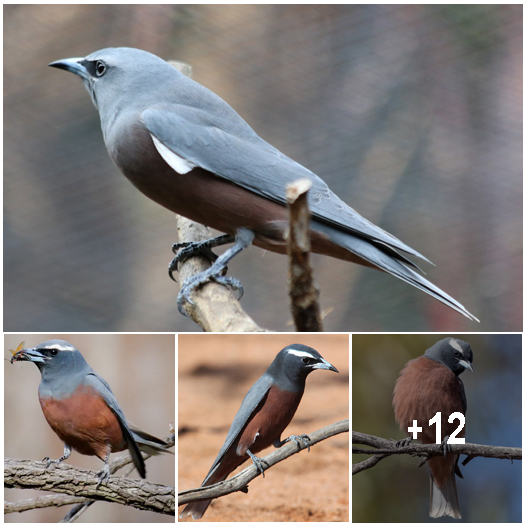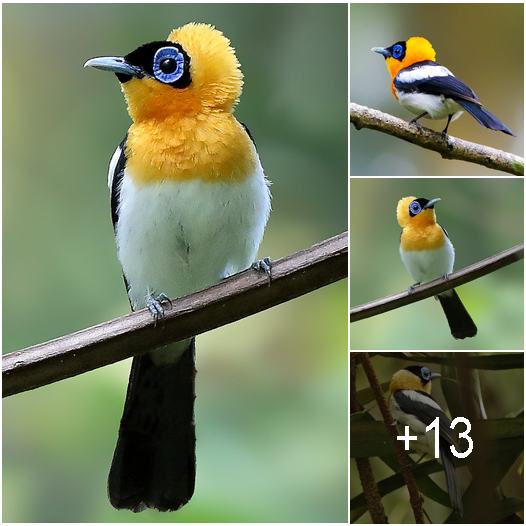Conspicuous white ear tufts and white wing bars are accompanied by a vibrantly yellow neck and shoulder band.
MEET THE STITCHBIRD (HIHI)
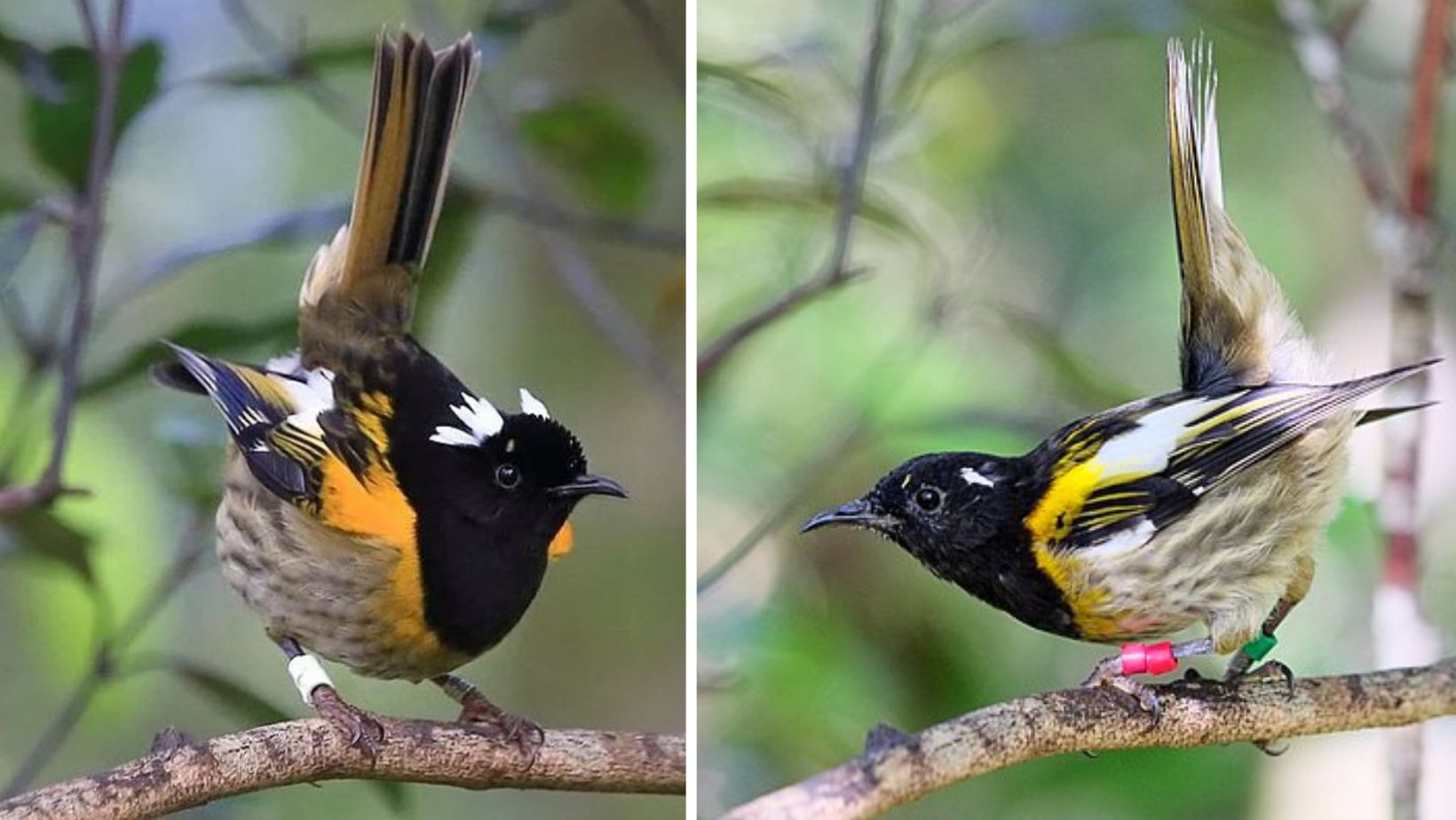
The stitchbird or hihi (Notiomystis cincta) is a bird now only found on New Zealand’s offshore islands and fenced mainland reserves. Males have a dark velvet cap and white ear-tufts, which can be raised at will. There is a yellow band worn across the chest, separating his black head from the rest of his body. The belly is grey, his bill somewhat pointed and curved down. Both males and females have a long tongue with a brush at the end and thin whiskers projecting out from the base of the bill.
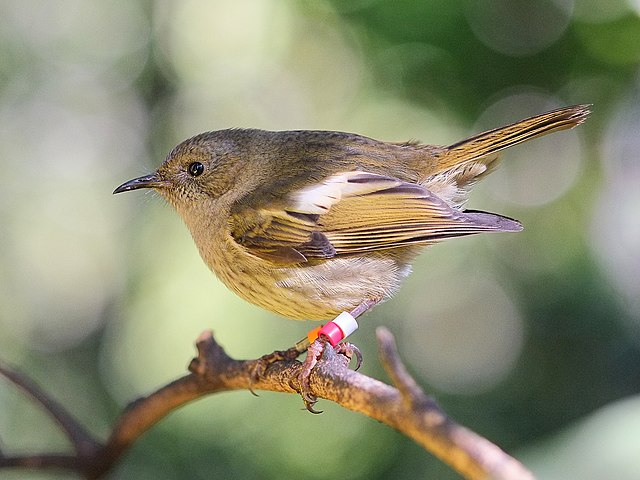
Female stitchbirds are very different from males in color, they can be differentiated by mainly greenish brown with yellow tinges and white wing bars.
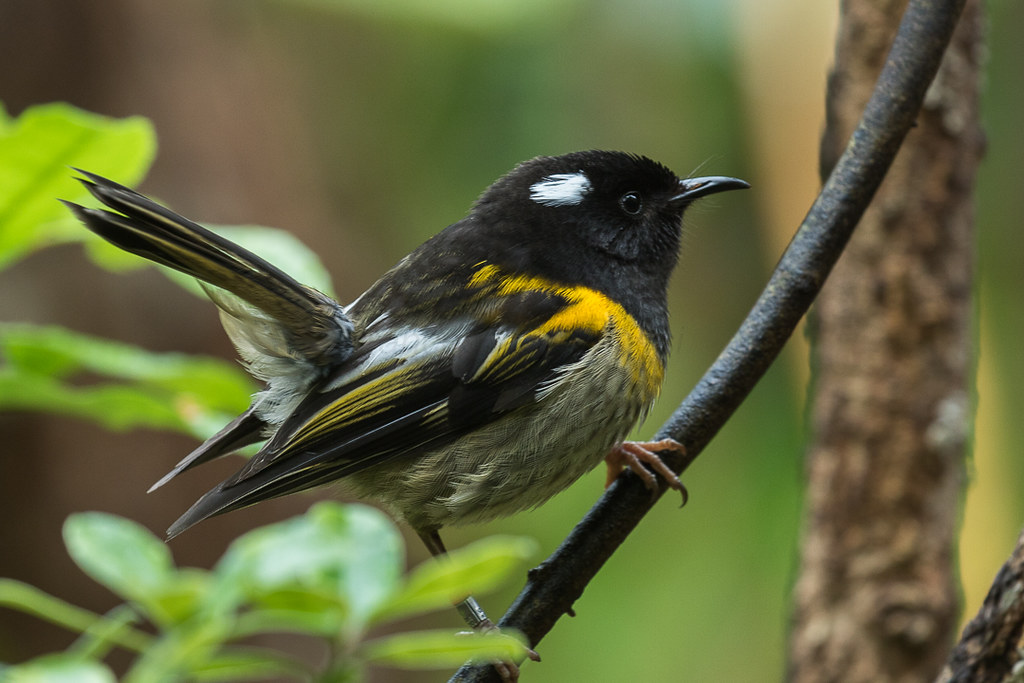
Once common throughout the North Island of New Zealand and in several offshore islands, the stitchbird is now only found on Little Barrier Island, with small translocated populations also on other offshore islands and fenced mainland reserves.
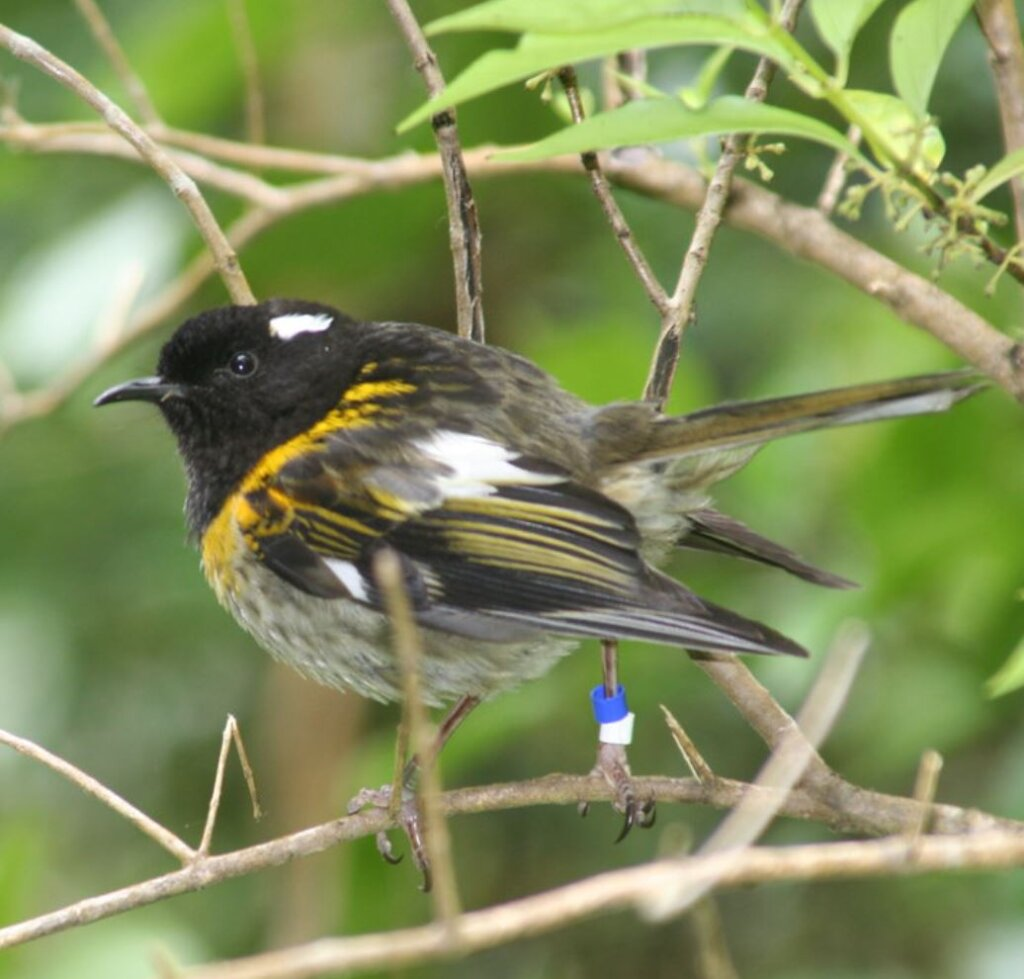
The stitchbird can be found in a variety of temperate forest habitats, requiring mature forests with plenty of tree holes for nesting. They are present from sea level up to an altitude of around 750 m.
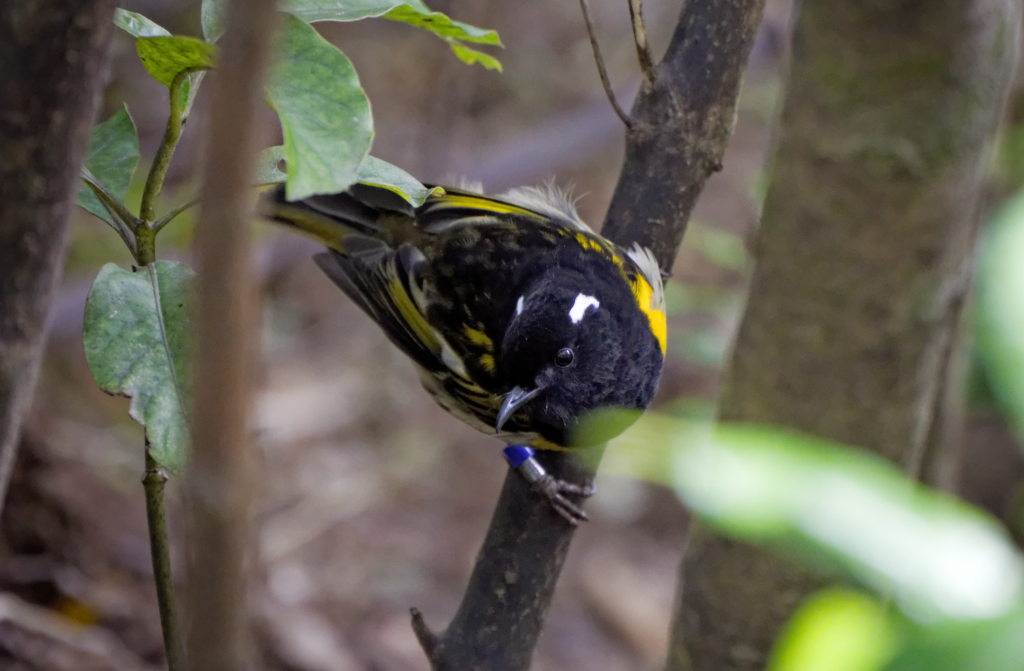
Stichbirds are mainly nectarivorous birds feeding on the nectar of various flowers, however, they will also take various fruits, insects, and other invertebrates.
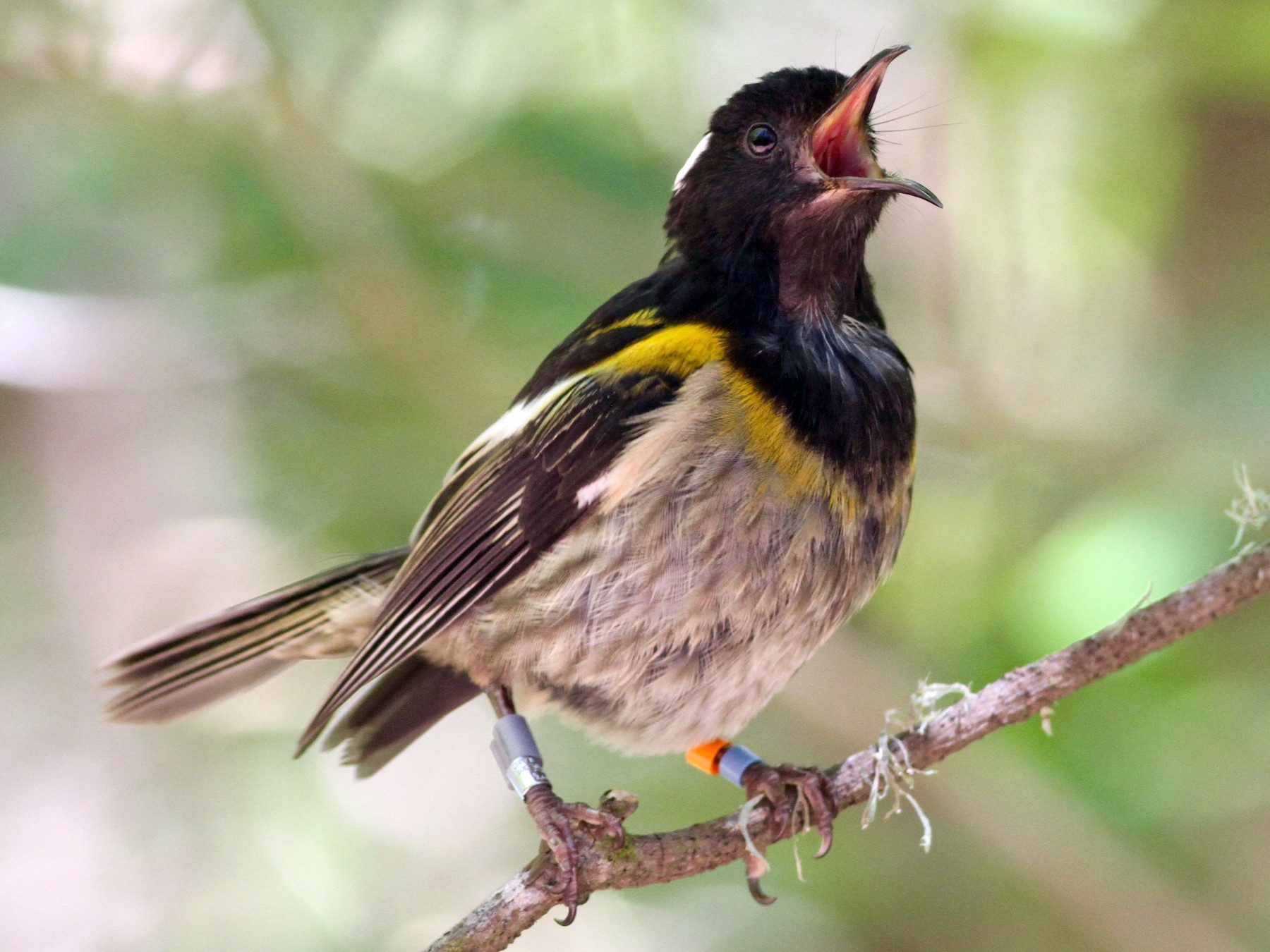
Stichbirds can be socially monogamous birds, but they sometimes also form breeding groups, where 2 males and 2 females band together to breed in the same territory. There are also high levels of extra-pair parenting. They breed from September through to March. They nest in a tree hole, where they build a bowl-shaped net with twigs, grass, and fern rhizomes. The female lays 3-5 eggs within, which she incubates alone for about 15 days. Both parents feed the chicks, which fledge about 30 days after hatching.
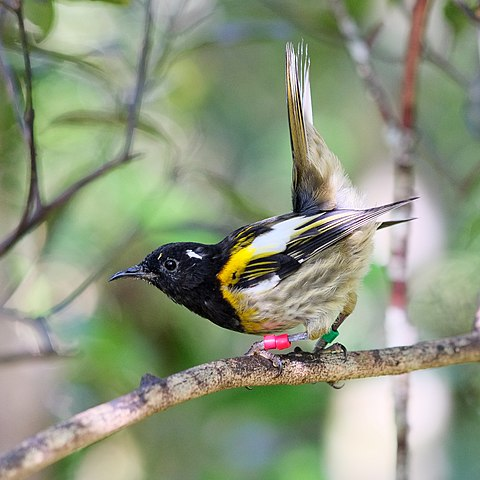
This species has a very small breeding range and a global population estimated at just 3000 to 4500 individuals. Conservation efforts have led to the translocation of individuals into two offshore islands and a couple of fenced areas to prevent predation on the North Island but they appear to require large expanses of mature forest to survive which represents a major hurdle to conservation efforts.
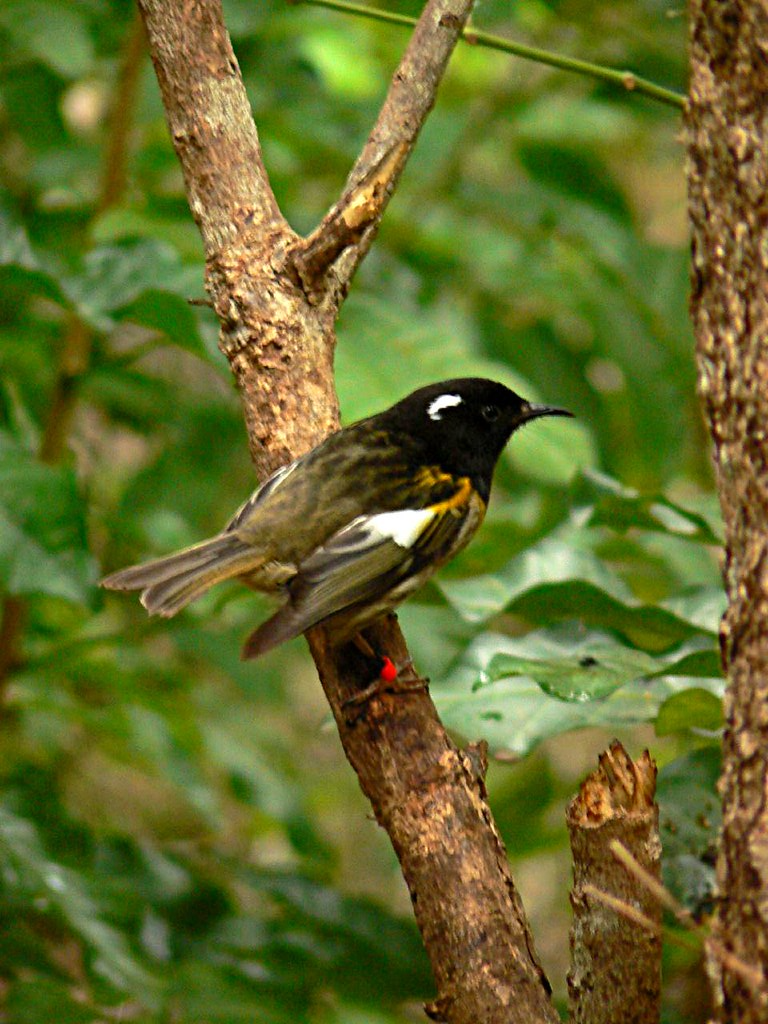
YOU CAN WATCH THE STICHBIRD’S STORY RIGHT HERE BELOW:
